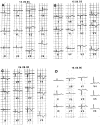Human stress cardiomyopathy mimicking acute myocardial syndrome
- PMID: 9415014
- PMCID: PMC1892287
- DOI: 10.1136/hrt.78.5.509
Human stress cardiomyopathy mimicking acute myocardial syndrome
Abstract
Two cases of transient acute cardiomyopathy occurring in the immediate aftermath of intense emotional stress and without any identified aetiology are described. These two cases reports, mimicking cases of acute cardiomyopathy described in patients with pheochromocytoma, suggest the possibility in man of acute catecholamine induced cardiomyopathy related to major emotional stress alone, a phenomenon so far reported only in animal experimental models.
Figures


Comment in
-
Human stress cardiomyopathy mimicking acute myocardial syndrome.Heart. 1998 May;79(5):530. doi: 10.1136/hrt.79.5.530. Heart. 1998. PMID: 9659212 Free PMC article. No abstract available.
Publication types
MeSH terms
Substances
LinkOut - more resources
Full Text Sources
Medical
